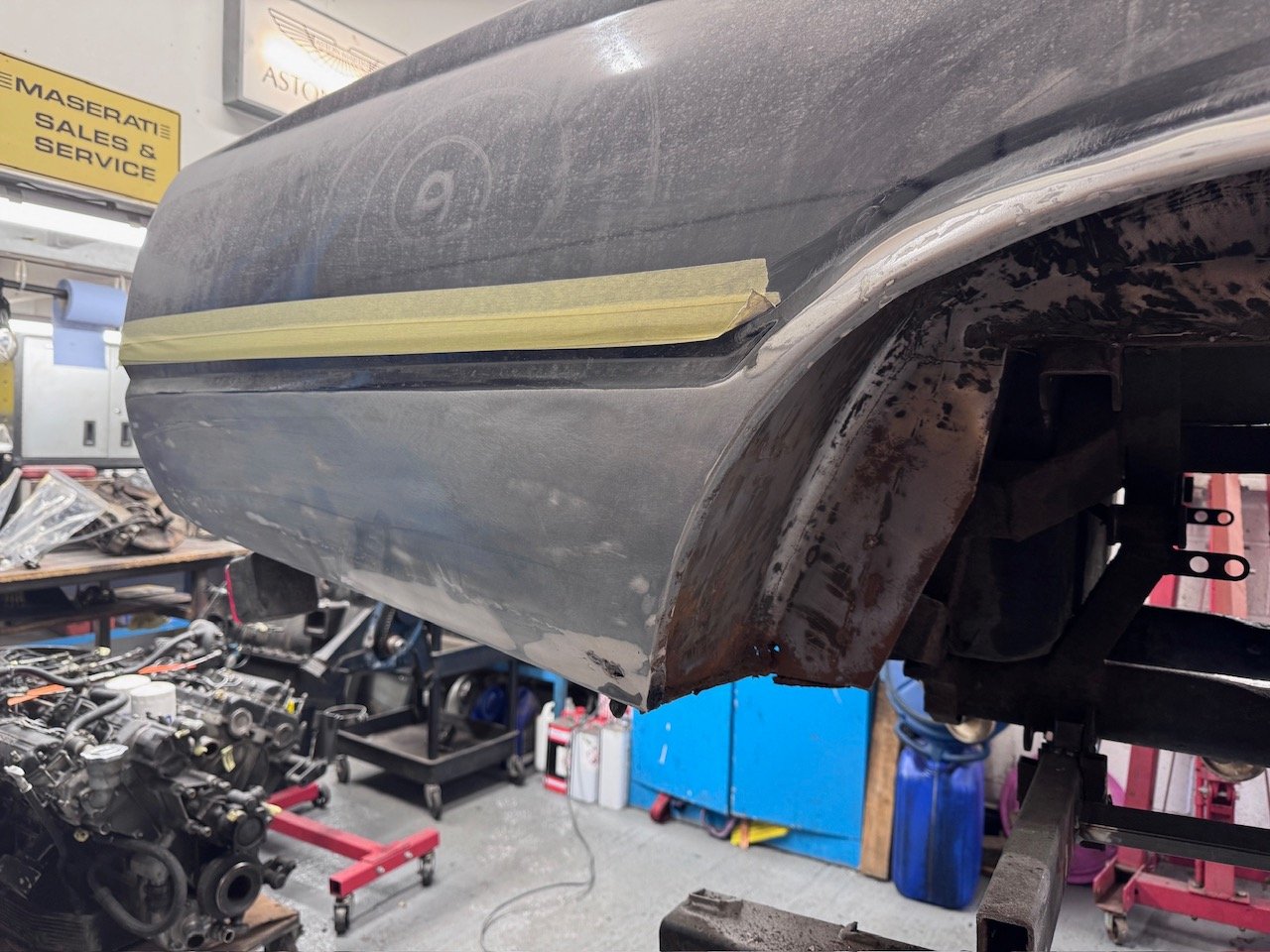1981 Ferrari 400i Restoration Diary
The Ferrari 400i, a model that embodies the pinnacle of 1980s luxury and performance, is a true testament to Ferrari’s commitment to blending elegance with power. The 1981 Ferrari 400i, a beautifully crafted GT car, might not have the instant name recognition of the iconic Ferrari 308 or 512, but it remains a cherished piece of automotive history. For enthusiasts and collectors, restoring a 1981 Ferrari 400i isn’t just about bringing back a car to its former glory—it's about preserving a piece of Italian craftsmanship, rich history, and unforgettable driving experience.
The Ferrari 400i: A Brief Overview
Before diving into the intricacies of restoration, it's important to understand what makes the 1981 Ferrari 400i such a unique and desirable vehicle. Produced between 1979 and 1985, the 400i is part of the Ferrari 400 series, known for its luxurious Grand Tourer (GT) design. Unlike Ferrari’s more track-oriented models, the 400i was built for comfort without sacrificing performance. It was powered by a 4.8-liter V12 engine, a front-mounted masterpiece that delivered a silky smooth driving experience and enough power to make any road feel like a private track.
While the Ferrari 400i might not boast the same raw, racing-inspired energy of some of Ferrari’s other models, it’s revered for its ability to combine high performance with sophistication. It was Ferrari’s way of catering to a different type of driver: one who valued long, fast drives through winding roads just as much as outright speed.
We’ll be carrying out the following:
Full engine rebuild (4.8 litre V12 engine fuel-injected and has a Bosch K-Jetronic system)
Full interior re-trim using correct Connolly leather.
Bodywork and paintwork carried out to exacting standards.
Electrical, mechanical and suspension upgrades and repairs.
Follow us along the way or ‘learn more’ below.
The Restoration Process: A Fine Balance of Art and Engineering
Restoring a 1981 Ferrari 400i isn’t something that can be taken lightly. Like all classic Ferraris, the restoration requires precision, patience, and a keen understanding of both the car’s mechanical and aesthetic values. Below, we’ll break down the various steps and key areas that demand attention during the restoration of a Ferrari 400i.
1. Engine Rebuild…
The heart of any Ferrari is its engine, and the V12 in the 400i is no exception. Over time, engines inevitably suffer wear and tear, and the 4.8-liter unit in the 400i is no different. Restoring this engine involves complete disassembly, inspection, and cleaning of all components. Major parts such as pistons, camshafts, and valve seats are often replaced to ensure that the engine operates at its original performance level.
The fuel injection system, a significant upgrade over the earlier carbureted Ferrari 400, also requires attention. The 400i used Bosch K-Jetronic mechanical fuel injection, which, though reliable, may have issues with age. Restoring this system to full functionality can improve overall fuel efficiency and throttle response.
A typical Ferrari 400i engine rebuild also involves checking the cooling system, timing belt, and all electrical components to ensure that the car runs as smoothly as it did when it first left the factory. It's worth noting that Ferrari’s original specifications for engine tuning are a benchmark to aim for during restoration—though some owners might opt to make modifications for improved reliability or power.
Further Engine Images:
2. Bodywork and Paint…
Like any restoration, the bodywork plays a pivotal role in bringing the Ferrari 400i back to life. The 400i’s design is timeless, with smooth, flowing lines and an understated elegance. However, as with all classic cars, rust and age can take their toll on the exterior. Body panels often require a thorough inspection to check for corrosion, especially around the wheel wells, rocker panels, and underbody.
Any signs of rust are addressed early on with a process called “media blasting,” where the old paint and rust are carefully removed without damaging the underlying metal. Once the body is restored to its original condition, the paintwork is done with a high-quality, period-correct Ferrari colour to bring it back to its original shine.
Bodywork upon arrival:
3. Suspension, Brakes, and Drivetrain…
The suspension and drivetrain systems in the Ferrari 400i need careful attention to ensure the car handles like a Ferrari should. Over time, suspension components such as bushings, dampers, and springs can wear out, resulting in a less responsive, more uncomfortable driving experience. These parts must be inspected, refurbished, or replaced as needed.
The 400i’s braking system, while advanced for its time, also needs to be brought back to full functionality. This includes inspecting the brake lines, callipers, and discs, and replacing any parts that show excessive wear. After all, a Ferrari is meant to be driven, and ensuring the braking system performs at its peak is critical.
4. Interior Restoration: Luxury and Comfort…
The interior of the 1981 Ferrari 400i is where much of the luxury experience shines through. The leather upholstery, wood veneers, and refined dashboard layout make it feel like a luxurious place to spend long hours on the road. However, age can be especially tough on these materials.
The leather seats often show signs of cracking, fading, and wear. Reupholstering with high-quality leather—usually in a colour that matches the car’s original interior scheme—is a must. The dashboard and centre console components, often made from wood or faux wood, can deteriorate over time, so refinishing or replacing them is part of the restoration process.
Special attention is given to the steering wheel, as well, as it often shows signs of wear. Depending on the condition, the original wheel can be restored, or a period-correct replacement can be sourced to ensure the interior looks and feels just like the car did when it first left the showroom.
See images below of the car upon arrival with us.













































